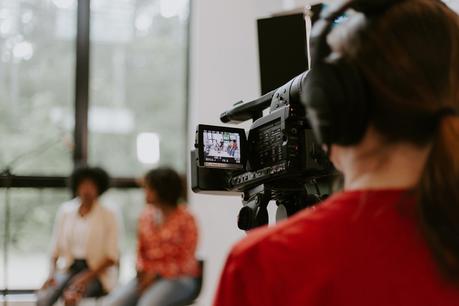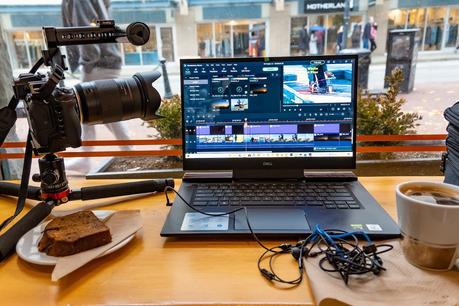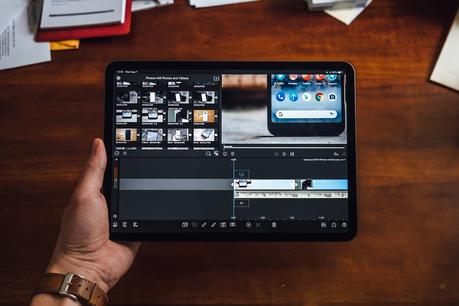Editors, whether professional or amateur, are always looking for ways to improve their craft. Whether you’re a seasoned pro or just starting out, video editing can be a tricky beast. There are so many ways to approach it, and so many software options to choose from. No worries – we’ve got your back.! In this blog post, we’ll go over some of the most effective video editing tips to help you create better videos, faster. We’ll discuss tips that will help make your videos more effective and engaging. So lace up your sneakers, it’s time to get started!
Planning your video before you start shooting
Well-planned video production is essential for a successful project. By planning your video, you can save time and money while ensuring that it looks great. Planning your video involves thinking about the shots you want to capture, the story you want to tell, and the style you want to achieve.
Once you have a plan in place, you can start assembling your video editing tools. There are many different video editing software programs available, so choose the one that best suits your needs. Once you have your software, start familiarizing yourself with its features. This will help make the editing process go more smoothly once you start filming.
Determine the types of shots you’ll need
Now that you know what type of video you’re creating, it’s time to determine the types of shots you’ll need. This will help you plan and storyboard your video, and make sure you have all the necessary tools and software.
There are a few basic types of shots: close-ups, medium shots, and wide shots. Close-ups are great for emphasizing details or facial expressions; medium shots are good for capturing action or showing the overall setting, and wide shots are perfect for establishing the scene or revealing the scope of an event.

You may also want to use panning and zooming shots to add movement and interest to your video. Panning shots involve smoothly moving the camera from side to side while zooming shots involve slowly moving the camera closer or farther away from the subject.
Once you’ve determined the types of shots you’ll need, it’s time to start planning your video. Storyboarding can be a great way to map out your video and make sure each shot flows smoothly into the next. Make sure to take into account the order in which you’ll want to capture your shots, as well as any special effects or transitions you’d like to use.
Choose the right music and sound effects for your video
When creating a video, it’s important to choose the right music and sound effects to set the mood and convey the desired message. There are a variety of tools and software available to help you do this, and it’s worth taking the time to find the right ones for your project.
The right music can help evoke emotions in your viewers and add power to your video. Be sure to choose music that is appropriate for the tone and content of your video. You may also want to consider using sound effects to enhance the impact of your video. Sound effects can add realism or humor, depending on what you’re going for.

Using the right tools and software can make the process of choosing music and sound effects much easier. There are a variety of video editing tools available, and many of them include features for adding music and sound effects. If you’re not sure which tools to use, do some research online or ask others in your video editing community.
When it comes to choosing the right music and sound effects for your video, there is no one-size-fits-all solution. However, by using the right tools and taking the time to find the right music and sound effects, you can create a video that is both effective and memorable.
Edit for emotion, not just information
Emotion is an important part of writing. It can help connect with the reader and keep them interested in what you have to say. However, it is important not to let your emotions get in the way of the information you are trying to share. Be sure to focus on getting your point across while still maintaining a strong emotional connection with your readers.
When editing your work for emotion, be sure to keep these things in mind:
– Use strong verbs and adjectives to create a vivid picture for the reader.
– Write in a way that engages the reader and makes them feel like they are right there with you.
– Make sure your emotions are authentic and come from a place of sincerity.
– Use humor and irony when appropriate to add a touch of levity to your work.
When done correctly, incorporating emotion into your writing can help you connect with your readers in a powerful way. It can also make your writing more engaging and enjoyable to read. So don’t be afraid to let your emotions show, but be sure to balance them with the information you are trying to share. In the end, it’s the best of both worlds that will connect with your readers and keep them coming back for more.
Use transitions to help tell your story

One way to make your writing more interesting is to use transitions. These are words or phrases that help you move from one idea to the next, and they can add a lot of depth and coherence to your work. Without transitions, your writing can feel choppy and disjointed.
There are many different types of transitions, and you can use them to create all sorts of effects. Some common transition words and phrases include “however,” “therefore,” “moreover,” “furthermore,” “in addition,” and “subsequently.” You can also use connectors such as “and,” “but,” “or,” “nor,” and “so.”
Transitions can be used at any point in your writing, but they are particularly important at the beginning and end of paragraphs. They can also be used to link different sections of your work together.
Transitions are a great way to add polish to your writing, and they can help you connect with your readers on a deeper level. Try using them in your next piece, and see how they can make a difference.
Keep your videos short and sweet

The reason people are so quick to abandon videos is that they’re usually long and drawn out. No one has time for that. You have to keep your videos short and sweet if you want people to stick around until the end.
This doesn’t mean you can’t make long videos, it just means you need to be strategic about it. Split your video into shorter segments and make sure each segment is interesting enough to keep viewers engaged.
If you can keep people hooked, they’ll be more likely to watch the entire video. And who knows, they might even share it with their friends!
Editing your footage and Finishing up your video
Now that you have all your footage edited together, it’s time to finish up your video. This means adding any final touches, like music or titles, and then exporting it in the correct format. This will depend on where you plan to publish it and what type of device you’re using. Congratulations! You’ve finished your video.
Conclusion
So, now that you have all of this great footage, what do you do with it? Editing your footage is the next step in turning it into a polished video. The editing process can be tedious, but it’s worth taking the time to make sure your video looks and feels good. There are a lot of different software options out there for editing videos, so find one that works best for you and start playing around with it. You can also find lots of tutorials online to help guide you through the process. Once your video is edited, it’s ready for uploading! But before you hit publish, make sure to give it one last look and make any final tweaks. And there you have it – your very own marketing video!
